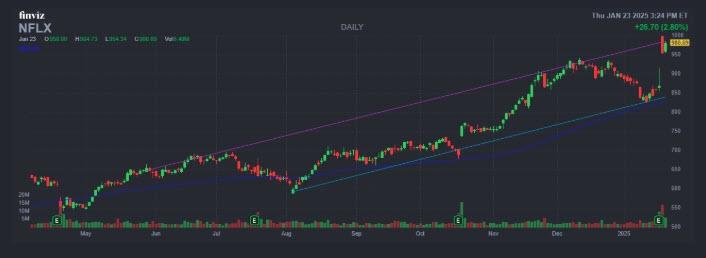Netflix (NFLX) was a big winner on Wall Street this week. The streaming stock gapped 9.7% higher on Jan. 22, in the wake of an outstanding earnings report that saw the company post a top-line beat for the fourth quarter and topple 300 million subscribers. The shares hit a record high of $999 that day, before cooling off and settling at $953.99. The good news for investors betting on NFLX hitting four digits – the stock is flashing a historically bullish signal on the charts.
Netflix’s recent high coincides with historically low implied volatility (IV) – a combination that has generated tailwinds in the past. According to data from Schaeffer’s Senior Quantitative Analyst Rocky White, there have been eight times over the last five years when the equity was trading within 2% of its 52-week high, while its Schaeffer’s Volatility Index (SVI) also happened to sit in the 20th annual percentile or lower. This is the case with the stock’s current SVI of 25%, which sits in the 6th percentile of its annual range.
Data shows that one month after those signals, the equity boasted a 75% win rate and averaged a 4.7% return over that timeframe. From its current perch of $979.92, a similar move would put NFLX comfortably above $1,000 in the next month.
There are additional technical support levels to watch that could make this rally sustainable. Note in the chart above the channel of higher highs carved since August. If the stock can topple the upper rail of this channel, NFLX could be off to the races. The equity could also see chart support step up at its newly-cleared +10% year-to-date level, while its 80-day moving average was an effective springboard earlier this month, also per the chart above.
Analysts have been slow to adjust, and bull notes could also keep the wind at the security’s back. There are still 16 brokerages of the 41 in coverage that are on the sidelines with “hold” or “strong sell” ratings, while NFLX’s consensus 12-month price target of $1,047.20 is only a 6.6% premium from its current perch.
Read the full article here
















